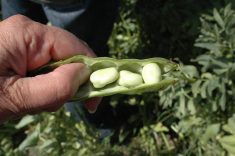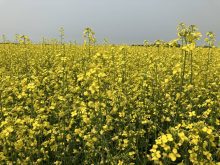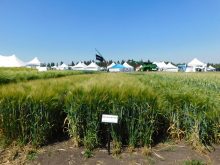We remind farmers that all it takes is one catastrophic event — such as a livestock disease like BSE or a sudden economic downturn — and the profitability many are now enjoying can turn on a dime,” says Vicki Chapman, with Agriculture Financial Services Corporation (AFSC). AFSC field analysts have been holding AgriStability information sessions. “It’s their job to ensure farmers understand the new program changes and the risk level it still covers on their farms — so they can make informed decisions before the April 30 enrolment deadline passes,” explains Chapman.
Read Also

New crop insurer policy enables easier startup for faba beans
Agriculture Financial Services Corporation updated its normals for faba beans, which may open the door for more Canadian producers to feel comfortable growing the pulse crop in the future.
Coverage has been reduced in some areas and expanded in others. “Beginning in 2013, producers must experience a larger drop in farm income before triggering payments under AgriStability,” Chapman explains, noting the changes will not affect 2012 AgriStability claims. “Payouts under the new rules will now trigger when a producer’s margin — their allowable income minus allowable expenses — drops below 70 per cent of either their ‘Olympic’ margin over the last five years or their average allowable expenses during that time frame, whichever is lower,” says Chapman. “The trigger point for payments was previously at 85 per cent,” says Chapman. “Limiting coverage to a producer’s average allowable expenses when it’s lower than their Olympic margin is also new.”
Once payments trigger, producers will be paid 70 cents for every dollar of loss. They were previously paid up to 80 cents on losses above a zero margin, and only 60 cents on losses below a zero margin — known as a negative margin, says Chapman. “Now if farmers suffer a big hit and drop into a negative margin — where they typically can no longer cover their input costs — they’ll receive a bigger payment at that 70-cent level. The changes provide more money where losses are deepest and transfer some of what’s considered ‘normal’ business risk back to producers.”
The upcoming changes realign AgriStability coverage to provide disaster assistance when producers need it most, rather than compensating reduced profits, says Chapman. AgriStability fees are also being lowered to $315 per $100,000 of coverage to reflect program changes, adds Chapman. “It’s relatively cheap protection for the coverage it offers.” Producers with questions about AgriStability should contact a field analyst at their AFSC District Office, visit www.afsc.ca, or phone the AFSC call centre at 1-877-899-AFSC (2372) before the April 30 deadline.














